- HOME
- HISTORY
- CURRICULUM
- AUDIO/VIDEO
- WHAT'S NEW

 |
 |
|
THE MUSIC IN THE JESUITIC REDUCTIONS IN THE ANCIENT PROVINCE OF PARAGUAY by Luis Szarán For many years the silent friezes sculptured on the walls of the ruins of the Church in Trinidad have been the only silent witnesses of the music in the Jesuitic Reductions. The interest musicologists, historians and musicians had about the music performed in the Jesuitic missions was great as they were curious to know what music choirs and orchestras made by natives performed, after being patiently created by Jesuit maestro. They called these Missions “Reducciones”, translated from the Latin expression REDUCTIO AD VITAM CIVILEM, to define this new way of evangelising the “savage” Indios Guarany. This system was experimented in different parts of Latin America by Dominicans and Franciscans during the 16th century and developed in a larger scale during the 17th and 18th centuries. 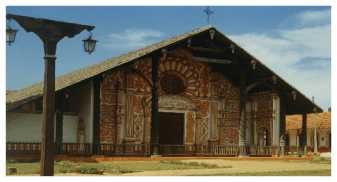 The Jesuits started their own project of Reductions since 1609, following a specific request made by the Governor Hernando Arias Saavedra, who asked the Provincial of the Society of Jesus to send missionaries to the unexplored frontiers, where the Spanish influence had not arrived yet. The Jesuits started their own project of Reductions since 1609, following a specific request made by the Governor Hernando Arias Saavedra, who asked the Provincial of the Society of Jesus to send missionaries to the unexplored frontiers, where the Spanish influence had not arrived yet. The Jesuitic Reductions became one of the most extraordinary chapters of history in South America, especially regarding music. The Society of Jesus founded by Ignacio López de Recalde, from Loyola, entered the immense region of the ancient Province of Paraguay with two missionaries and they founded the first Reduction among the Guaraníes called “San Ignacio Guazú. They established many very organised Reductions all over the area: at the end only 30 of them remained with 143.734 people living there. They brought the natives to a very high level and progress in cattle-breeding, agriculture, trade and arts. They succeeded in realising this incredible goal having a certain autonomy. The success of such a singular program was immediate and in a few years the voice spread all over and several missionaries joined the missions coming from different countries in Europe. “The musical State” The Jesuits protected natives against slavery, respected their language, put a lot of attention on their vital needs, offered them the pomposity of the Christian rites, services and processions. For this reason Music was extremely important and a fundamental factor to attract natives to the Reductions. 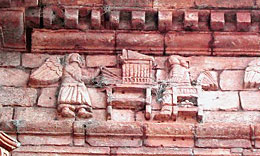 The extraordinary results achieved with the music in the Jesuitic Reductions were publicised a lot in Europe, calling even the attention of the Pope Benedict the 14th who wrote in his letter to the Bishops on 19 February 1749: “The harmonic and figurative singing spread so well, that it even was established in the Missions in Paraguay, because the believers in America have an excellent disposition and natural gifts, either for the vocal or the instrumental music and easily learn all that belongs to this art. The missionaries used music to bring the natives the faith in Christ, singing prayers with devotion and mercy and reaching a high level in ability that nowadays there is no difference between the masses and vespers in our countries and those performed there”. The extraordinary results achieved with the music in the Jesuitic Reductions were publicised a lot in Europe, calling even the attention of the Pope Benedict the 14th who wrote in his letter to the Bishops on 19 February 1749: “The harmonic and figurative singing spread so well, that it even was established in the Missions in Paraguay, because the believers in America have an excellent disposition and natural gifts, either for the vocal or the instrumental music and easily learn all that belongs to this art. The missionaries used music to bring the natives the faith in Christ, singing prayers with devotion and mercy and reaching a high level in ability that nowadays there is no difference between the masses and vespers in our countries and those performed there”.Father José Manuel Peramás reported how Guaraníes loved music: “We can say that the music performed by the Guaraníes in the church was devout and solemn, full of religiousness and without theatrical cadences and melodies and in the countryside or around the fireplace it was honest and suitable”.. He also informs us about the music activities they had in that time: “The Guaraníes were used to sing every day during the mass, accompanied by the organ and many other instruments. In the evening after the rosary they were intoning a short motet in honour of the Holy Sacrament and Mary, the Mother of God, to which all people answered”.. 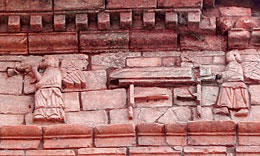 Other chroniclers described with sincere enthusiasm what they listened to. Father J. Pfotenhauer took note that: “They sing in Guaraní language the Benedicte and the Laudate; male children enter the temple of God first and sit down in perfect order on both sides. Together with the orchestra they sing and play arias, motets and opera in a perfect way”.. Other chroniclers described with sincere enthusiasm what they listened to. Father J. Pfotenhauer took note that: “They sing in Guaraní language the Benedicte and the Laudate; male children enter the temple of God first and sit down in perfect order on both sides. Together with the orchestra they sing and play arias, motets and opera in a perfect way”..José Cardiel wrote in 1747: “All Reductions have 30 or 40 musicians. They teach music to the Indios since when they are children and thanks to the quality of the teaching and the seriousness of the pupils, they become skilled musicians and singers. I travelled all over Europe and in few cathedrals I heard better music than this one”.. The musicians The diffusion of the main music instruments in the Rio de la Plata region was due mainly to the systematic work of teaching obtained inside the Jesuitic Reductions. The first ships that arrived to this land carried and introduced already some music instruments that usually were taken together with the “conquistadores”. During the colonial era the guitar appears brought to Paraguay by Pedro Mendoza. The first explorers were accompanied by drums, flutes and different kinds of trumpets. These instruments quickly spread over the continent, especially the guitar and the “vihüela” , which is similar to a guitar but it is smaller. During the first decade of the 17th century the first musicians arrived to the region and among them Rodrigo de Melgarejo, considered the first music maestro in the Reductions. Many famous European musicians who became missionaries joined the Reductions in South America, such as Rodrigo de Melgarejo, Juan Vaisseau, Antón Sepp, Martin Schmid, Luis Berger and Domenico Zipoli. Most missionaries arrived to South America with a solid academic basis and others with the sufficient knowledge to manufacture instruments. Some of them were famous in Europe, but attracted by the utopia of a new life they abandoned prestigious and privileged positions, supporting the danger and suffering of a long sailing through the ocean to enter an unknown world. One of the first music maestro who set foot in this region was Father Juan Vaisseau from Belgium where he worked as professional musician. He arrived to Paraguay in 1617, leaving the official position he had as Musician at the Court of Charles the 5th. Vaisseau lived here seven years only, but during this short period he “worked in a apostolic way, inserting music as a wonderful point and reference in the natives’ life”, as Father Antonio Ruiz de Montoya reported later. Also the French missionary Luis Berger arrived together with Vaisseau. He was not only a musician, but also a painter and a teacher of dance. There are many reports praising his work like the one written by Father Noël Berthot who declared ”Indios sang in a perfect French style”. Father Juan Vaisseau lived in the Reduction of Loreto, where he died in 1623. 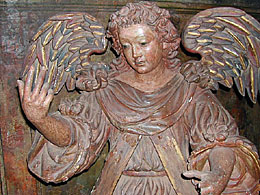 Anton Sepp: pedagogue and revolutionary Anton Sepp: pedagogue and revolutionaryThe famous Father Sepp lived in the Reductions since 1691 until he died in 1733. Father Sepp was born in 1655 in Caltern in South Tirol and belonged to a noble family, Sepp von Seppenburg zu Salegg. He studied in Augsburg where he learned the thorough bass technique and followed the school of baroque music. Since he was a child he belonged to the Choir of the Imperial Court in Vienna and he was immediately noticed as singer and instrumentalist. He studied various instrumental techniques from theorbo till the organ, going through the lute, the flute, the trumpet and the psaltery. While in Vienna, he was invited by the Emperor Ferdinand the 3rd and Charles the 6th to perform music as they mainly liked the Italian music, such as the new Venetian operas by Cavalli and Cesti. In 1674 Sepp joins the Society of Jesus, attracted by its prestige, its rigorous respect of the discipline and the vocation to serve. In 1687 he was ordained priest in the city of Augsburg, where he completed his music studies and learned the modern style under the guidance of the Kapell-Meister Johann Merchor Gletle. 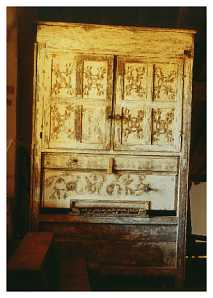 Two years later he sailed from Cadiz in Spain, together with other dreamers, towards the Jesuitic Reductions in Paraguay, representing what is today Argentina, Brazil and South Bolivia (Chiquitos). Father Sepp purchased the best instruments available in the European music shops: he bought an organ in the Netherlands to be installed in the city of Buenos Aires, spinet, claviers, bombards, clarinets and others. The effect the sound of these new instruments produced on the Fathers and natives has been described in details by Sepp himself. Two years later he sailed from Cadiz in Spain, together with other dreamers, towards the Jesuitic Reductions in Paraguay, representing what is today Argentina, Brazil and South Bolivia (Chiquitos). Father Sepp purchased the best instruments available in the European music shops: he bought an organ in the Netherlands to be installed in the city of Buenos Aires, spinet, claviers, bombards, clarinets and others. The effect the sound of these new instruments produced on the Fathers and natives has been described in details by Sepp himself.Anton Sepp, was an enthusiastic promoter of the musica and the art of building music instruments and was used to write about it in his correspondence: “We plaid for them a music piece using the big trumpet I brought from Augsburg and a small one I bought in Genoa. Those good Fathers never listened to such a music and were touched in their hearts by the sweet music of the psaltery. Then together with Father Böhm I plaid various flutes I bought in Genoa and then I plaid the violin and the “tromba marina” which is an instrument with only one string and has a similar sound to the trumpet. They built this instrument for me in Cadiz. The Fathers have been extremely happy and were asking for more… During this year (1692) I formed the following future maestro: 6 trumpet players, 3 good theorbo players, 4 organists, 30 clarinet players, 18 cornetists and 18 bassoon players. The 8 new singing teachers are not ready yet, although they are improving and learning every day”. Father Sepp introduced the so called modern style in the music. It was the new way to play music born in Italy at the beginning of the 16th century with the first chamber orchestras. Before then, the compositions were written to be sung or plaid without defining the roles. The first missionaries and musicians like Berger and Vaisseau taught music according to the old style. Vaisseau had been musician at the Court of the Archduke Albert of Austria, then he became Kapell-Meister at the Court of Charles the 5th. All methods were based on styles applied in Spain and Portugal, where for writing music they were known as mensural notation (using signs like: maxima, longa, brevis, etc.), replaced then with the modern style by minim, crotchet, quaver, etc. This means that, the music during the first years was referring to compositions and style of Tomas Luis de Victoria, Cristóbal de Morales and other representatives of the polyphonic school in Spain and Portugal of the 16th and 17th century. In the same period a new music style was arising in Germany and in Italy with Monteverdi, Gabrieli, Schütz and others. Father Sepp brought to the Reductions not only the new way of writing music, but also modern new instruments such as: violins, bombards, harps, flutes, guitars, bass violas, dulcianas and bassoons. Father Sepp, arrived in 1691, he served in the Reductions until he died in 1733, when he was 77, after 53 years of priesthood and 41 as missionary. Other missionaries who taught music at a high level were Martin Schmid who lived in Chiquitos and Luis Berger in Saint Ignacio since 1616. But the most important work was the one developed by Domenico Zipoli, who lived in Cordoba and mainly composed music for all Reductions in the continent. Domenico Zipoli, born in Prato near Florence in 1688, was one of the greatest composer of organ music and known for his important work “Sonate di Intavolatura per Organo e Cembalo”, published in Rome and in London in 1716 and also for some of his Oratorios and Cantatas, most of them went lost. Very few people knew that this important composer at the top of his career, just one year after he published his masterpiece, secretly left Rome to Sevilla in Spain and then sailed towards the utopian “Musical Nation of the Jesuits” in South America. Did Domenico Zipoli really exist? For the majority of the musicologists in the world life and musical history of the famous Italian composer Domenico Zipoli is a mystery not only for his decision to leave his prestigious position as organist and Kapell-Meister at Chiesa del Gesù in Rome and leave to South America, but also for his early activity in Italy as many of his works got lost. Lack of information about his life created sometimes confusion, so experts like Marpurg and Gerber even raised doubts about his existance. In 1942 Guido Pannain wrote in his “Storia della Musica” that some pieces of the publication “Sonate d'Intavolatura per Organo e Cembalo”, published in Europe before Zipoli left to South America, had been composed by Durante and Scarlatti and then copied by Zipoli. This speculation was considered as possible because Zipoli left Naples after quarrelling with his maestro Alessandro Scarlatti to go to Bologna and then to Rome together with other musicians to enter afterwards the Society of Jesus. The mysterious vanishing of Domenico Zipoli in 1716 from the European musical panorama has a first answer only in 1943 when the musicologist Lauro Ayestarán from Uruguay discovers that “a certain Hermano Domingo Zipoli, organist in the Jesuit Church in Cordoba” was the same composer considered in his times as the successor of Frescobaldi. Only recently we could have a definitive confirmation of his presence in South America, especially after the discovery of many manuscripts of music the maestro wrote in this region. The music composed by Zipoli in South America was destroyed together with other documents and works of art soon after the expulsion of the Jesuits in 1767. 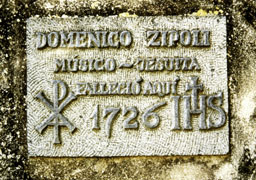 In
1966 the musicologist Samuel Claro from Chile traces in an isolated
part of Eastern Bolivia some intact churches and fragments of Zipoli’s
works, sent by messengers to those remote missions. Recently the architect
and restorer of the Reductions in Chiquitos, Hans Roth from Switzerland,
discovered thousands pages of music composed by Zipoli and anonymous
authors that are studied today, transcribed and performed the world
over as an important evidence of that extraordinary experience and
adventure. Father Peramás wrote in 1793 about Zipoli after
he listened to a concert of his music: “whoever listened to Zipoli’s
music would never find anything so sublime, like after trying for
the first time wild honey, you find all other food tasteless”.
This great composer died in the Estancia de Santa Catalina near Cordoba
in 1726 when he was 38 years old only. In
1966 the musicologist Samuel Claro from Chile traces in an isolated
part of Eastern Bolivia some intact churches and fragments of Zipoli’s
works, sent by messengers to those remote missions. Recently the architect
and restorer of the Reductions in Chiquitos, Hans Roth from Switzerland,
discovered thousands pages of music composed by Zipoli and anonymous
authors that are studied today, transcribed and performed the world
over as an important evidence of that extraordinary experience and
adventure. Father Peramás wrote in 1793 about Zipoli after
he listened to a concert of his music: “whoever listened to Zipoli’s
music would never find anything so sublime, like after trying for
the first time wild honey, you find all other food tasteless”.
This great composer died in the Estancia de Santa Catalina near Cordoba
in 1726 when he was 38 years old only.THE UTOPIA WEAPONS (violins, flutes and psalteries) As regards music, missionaries introduced European instruments, built their own workshops and composed several works of sacred and profane music that were performed by choir and orchestras of natives. The most important place to teach music and manufacture instruments was the Reduction in Yapeyú. There lived Father Anton Sepp, who funded a Conservatoire for natives and the children of Spanish people living in nearby towns. His ability in manufacturing instruments was so great that he produced more than 20 different instruments after his first year of activity. He taught this way “6 trumpet players, 3 good theorbo players, 4 organists, 3 clarinet players, 18 trumpet and 18 bassoon players”. 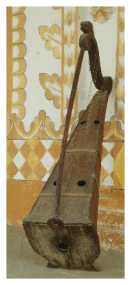 Lutist’s workshops
Lutist’s workshops Father Sepp was a pioneer of the art of making instruments, perhaps for the need to have efficient instruments available due to the difficulties of importing instruments from Europe. Furthermore he had an increasing request of instruments coming form the other Reductions so he started creating a parallel activity to music teaching, manufacturing all sort of instruments. The high reputation of instruments manufactured in Yapeyúgrew rapidly. Father Peramás wrote: “You can see eminent maestro manufacturing pneumatic organs and all kind of instruments”.. Charlevoix took note that: “They manufacture and play any kind of musical instrument. I saw them assembling very complicated organs just after examining an original one once”. And Father Pfotenhauer said that “First of all Father Sepp wants an organ in every church. He himself is manufacturing pedal keyboards, organ stops and he is very satisfied of the success of this initiative”. Soon after his arrival, Father Sepp proudly said he formed several musicians. Father Matias Strobel wrote about this subject: “Father Sepp introduced to Yapeyú harps, trumpets, trombones, bagpipes and the organ. He also introduced a new tonality (Tonsatz) and was praised and became famous for his music teaching. At the same time he followed the manufacturing of any kind of musical instrument”. From his head quarters Father Sepp was asking for new compositions in Europe made by Johann Melchior Gletle, Johann H. Schmelzer, Heinrich Ignaz Franz Biber, Johann K. Kerll and others. The most named instruments on documents of the Reductions and their inventories are: violin, viola, big and small bassoons, cello e contrabass, harps and less mentioned other instruments like lyre, cittern, mandolin and mandola, guitar or vihuela, spinet or clavier, tromba marina, clavichord, psaltery. by Luis Szarán - - - Follows: Short historical notice, History of a meeting, Examples of music manuscripts |
| Copyright © 2015 - DZE - C.F.: FRNGRG47P29A757V |